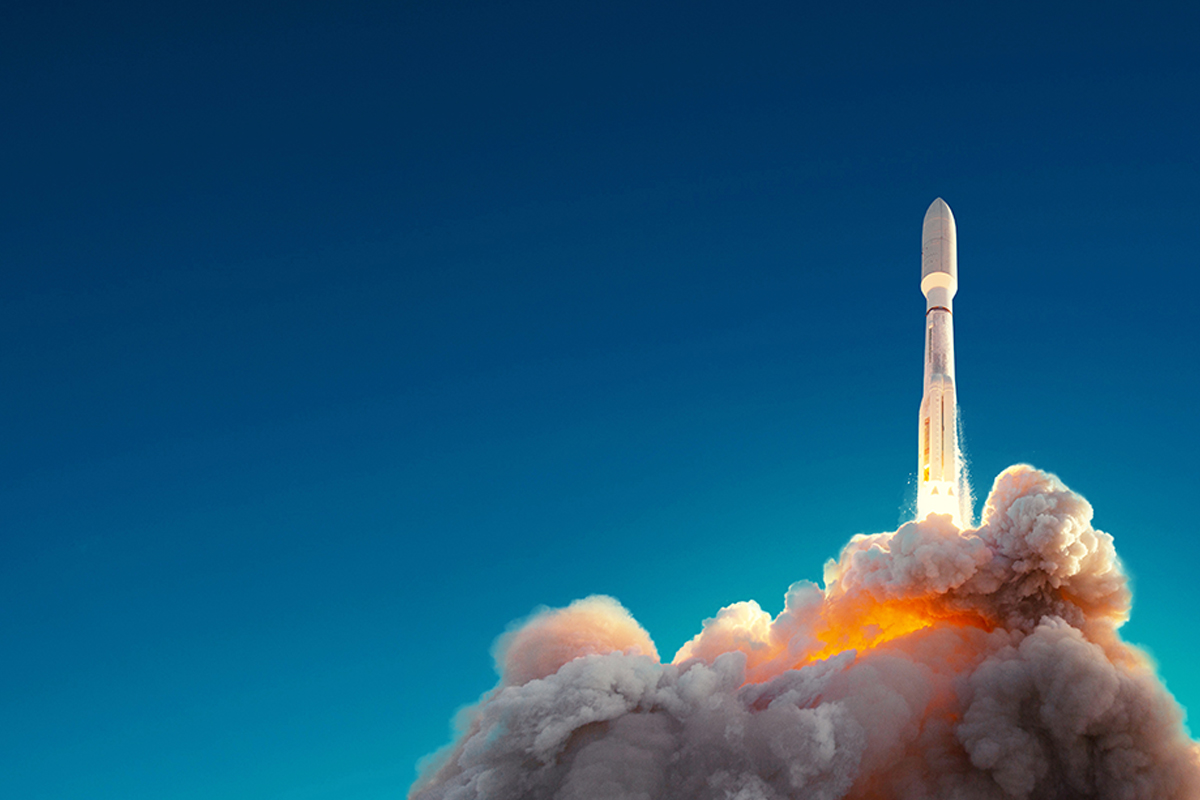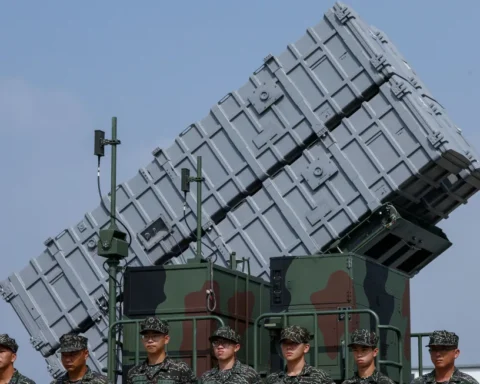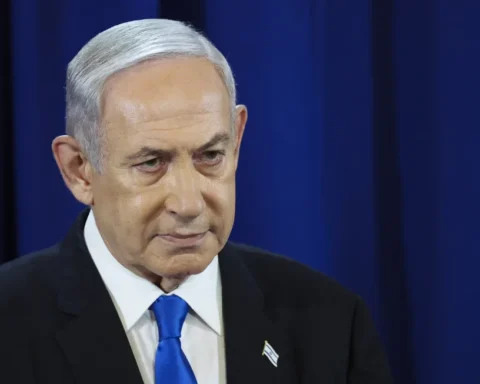Striving to be the fourth nation to accomplish a controlled lunar landing, India launched the much-anticipated Chandrayaan-3 mission this Friday.
Chandrayaan, translating to “moon vehicle” in Sanskrit, took flight from the Satish Dhawan Space Center in the southern region of Andhra Pradesh state, Sriharikota, slightly past 2:30 p.m. local time (5 a.m. ET).
Many spectators convened at the space center for the landmark launch, with an audience of over a million viewers following the event on YouTube.
Later in the day, the Indian Space Research Organization (ISRO) verified via Twitter that Chandrayaan-3 is on a “precise orbit” and has embarked on its lunar expedition, adding that the spacecraft’s condition is “normal.”
In response, Prime Minister Narendra Modi of India tweeted, “Chandrayaan-3 initiates a new epoch in India’s cosmic journey. It takes flight, lifting the hopes and ambitions of every Indian. This significant achievement mirrors the unwavering commitment of our scientists. I honour their spirit and creativity!”
The spacecraft is set to make its lunar landing on August 23.
This is India’s second endeavour for a soft landing after the unsuccessful attempt of Chandrayaan-2 in 2019. The nation’s first lunar probe, Chandrayaan-1, successfully orbited the moon and was then intentionally crashed onto the lunar surface in 2008.
The Chandrayaan-3, an ISRO project, consists of a lander, propulsion module, and rover. Its mission is to safely descend onto the moon, gather data, and conduct scientific experiments to understand the lunar composition further.
Only the United States, Russia, and China have managed the intricate task of soft-landing a spacecraft on the moon.
Indian engineers have been working towards this launch for years, aiming to land Chandrayaan-3 near the moon’s yet unexplored South Pole.
The maiden lunar mission, Chandrayaan-1, revealed the presence of water molecules on the moon. In contrast, the Chandrayaan-2 entered lunar orbit successfully, but its rover crash-landed on the lunar surface, which was also meant to explore the South Pole.
Even with the past failure, Prime Minister Modi lauded the engineers behind the mission and pledged to continue working on India’s space endeavours.
Before Friday’s launch, Modi stated that the day will be forever remembered as a golden day in India’s space history.
“The extraordinary mission carries the aspirations and dreams of our nation,” he expressed in a Twitter post.
India has invested approximately $75 million in the Chandrayaan-3 mission.
Modi revealed that the rocket will traverse more than 300,000 kilometres (186,411 miles) and reach the moon in the upcoming weeks.
Decades in the Making
India’s space program dates back over six decades, beginning when it was a newly independent and deeply impoverished country grappling with the aftermath of a violent partition.
In 1963, India’s space ambitions were humble compared to the grand aspirations of the US and the former Soviet Union, as it launched its first rocket into space.
Today, India is the world’s most populated nation and its fifth-largest economy, with a burgeoning young population and thriving innovation and technology hub.
Under Modi’s leadership, India’s space ambitions have accelerated.
For Modi, who came to power in 2014 with a nationalistic agenda and promises of future greatness, the space program represents India’s rising global prominence.
In 2014, India was the first Asian nation to reach Mars with its Mangalyaan probe, spending only $74 million – less than the $100 million Hollywood spent making the space thriller “Gravity.”
In 2017, India broke records by launching 104 satellites in one mission.
In 2019, Modi declared in a rare televised speech that India had shot down one of its satellites in an anti-satellite test, becoming one of four nations to do so.
That same year, former ISRO chairman Kailasavadivoo Sivan announced India’s plans to establish an independent space station by 2030.
The speedy progress and innovation have made space tech one of India’s most lucrative investment sectors, attracting world leaders’ attention.
During a state visit to Washington last month, Modi and US President Joe Biden expressed a mutual interest in collaborating in the space economy.
But India’s space dreams extend beyond the moon or Mars. ISRO has proposed an orbiter mission to Venus as well.
The success of Chandrayaan-3 could significantly shift the balance in the international space race, placing India in a prominent position among the elite group of nations with moon-landing capabilities. As the world watches, this mission encapsulates India’s growing technological prowess and commitment to space exploration, holding immense potential for future scientific discoveries and collaborations. Regardless of the outcome, Chandrayaan-3 symbolizes a giant leap forward for India, underscoring the nation’s determination to reach the stars and inspire future generations.
Striving to be the fourth nation to accomplish a controlled lunar landing, India launched the much-anticipated Chandrayaan-3 mission this Friday.
Chandrayaan, translating to “moon vehicle” in Sanskrit, took flight from the Satish Dhawan Space Center in the southern region of Andhra Pradesh state, Sriharikota, slightly past 2:30 p.m. local time (5 a.m. ET).
Many spectators convened at the space center for the landmark launch, with an audience of over a million viewers following the event on YouTube.
Later in the day, the Indian Space Research Organization (ISRO) verified via Twitter that Chandrayaan-3 is on a “precise orbit” and has embarked on its lunar expedition, adding that the spacecraft’s condition is “normal.”
In response, Prime Minister Narendra Modi of India tweeted, “Chandrayaan-3 initiates a new epoch in India’s cosmic journey. It takes flight, lifting the hopes and ambitions of every Indian. This significant achievement mirrors the unwavering commitment of our scientists. I honour their spirit and creativity!”
The spacecraft is set to make its lunar landing on August 23.
This is India’s second endeavour for a soft landing after the unsuccessful attempt of Chandrayaan-2 in 2019. The nation’s first lunar probe, Chandrayaan-1, successfully orbited the moon and was then intentionally crashed onto the lunar surface in 2008.
The Chandrayaan-3, an ISRO project, consists of a lander, propulsion module, and rover. Its mission is to safely descend onto the moon, gather data, and conduct scientific experiments to understand the lunar composition further.
Only the United States, Russia, and China have managed the intricate task of soft-landing a spacecraft on the moon.
Indian engineers have been working towards this launch for years, aiming to land Chandrayaan-3 near the moon’s yet unexplored South Pole.
The maiden lunar mission, Chandrayaan-1, revealed the presence of water molecules on the moon. In contrast, the Chandrayaan-2 entered lunar orbit successfully, but its rover crash-landed on the lunar surface, which was also meant to explore the South Pole.
Even with the past failure, Prime Minister Modi lauded the engineers behind the mission and pledged to continue working on India’s space endeavours.
Before Friday’s launch, Modi stated that the day will be forever remembered as a golden day in India’s space history.
“The extraordinary mission carries the aspirations and dreams of our nation,” he expressed in a Twitter post.
India has invested approximately $75 million in the Chandrayaan-3 mission.
Modi revealed that the rocket will traverse more than 300,000 kilometres (186,411 miles) and reach the moon in the upcoming weeks.
Decades in the Making
India’s space program dates back over six decades, beginning when it was a newly independent and deeply impoverished country grappling with the aftermath of a violent partition.
In 1963, India’s space ambitions were humble compared to the grand aspirations of the US and the former Soviet Union, as it launched its first rocket into space.
Today, India is the world’s most populated nation and its fifth-largest economy, with a burgeoning young population and thriving innovation and technology hub.
Under Modi’s leadership, India’s space ambitions have accelerated.
For Modi, who came to power in 2014 with a nationalistic agenda and promises of future greatness, the space program represents India’s rising global prominence.
In 2014, India was the first Asian nation to reach Mars with its Mangalyaan probe, spending only $74 million – less than the $100 million Hollywood spent making the space thriller “Gravity.”
In 2017, India broke records by launching 104 satellites in one mission.
In 2019, Modi declared in a rare televised speech that India had shot down one of its satellites in an anti-satellite test, becoming one of four nations to do so.
That same year, former ISRO chairman Kailasavadivoo Sivan announced India’s plans to establish an independent space station by 2030.
The speedy progress and innovation have made space tech one of India’s most lucrative investment sectors, attracting world leaders’ attention.
During a state visit to Washington last month, Modi and US President Joe Biden expressed a mutual interest in collaborating in the space economy.
But India’s space dreams extend beyond the moon or Mars. ISRO has proposed an orbiter mission to Venus as well.
The success of Chandrayaan-3 could significantly shift the balance in the international space race, placing India in a prominent position among the elite group of nations with moon-landing capabilities. As the world watches, this mission encapsulates India’s growing technological prowess and commitment to space exploration, holding immense potential for future scientific discoveries and collaborations. Regardless of the outcome, Chandrayaan-3 symbolizes a giant leap forward for India, underscoring the nation’s determination to reach the stars and inspire future generations.







